Ford 427 Engine – Specs and History

Meet Austin
Austin has been a muscle car enthusiast since an early age with his Dad having a collection including a 1965 Mustang, 1968 Mercury Cougar, and a 1969 Mustang Mach 1 among many others. Austin received a technical writing degree from University of Colorado Denver with the intentions of becoming an automotive journalist. His automotive knowledge, enthusiasm, and hands on experience allow him to craft detailed, accurate, and high-quality articles for the passionate Muscle Car Club audience.
Ford has undeniably put out some of the best V8s that America has to offer. From the Flathead to the Windsor, Ford’s V8 engines have always been a benchmark to strive for. The 1960s were a time of serious innovation and evolution for Ford’s V8 lineup. After the Ford Y-Block didn’t quite live up to expectations, the Ford FE engine family was introduced to save the day. And that it did, powering some of the most sought-after muscle and pony cars of the muscle era.
The Ford 427 is perhaps the most celebrated engine in the FE engine family for good reason. While the majority of the most famous engines in history became legendary due to their placement in attainable cars, the 427’s legacy came from its success on the racetrack. From NASCAR to Le Mans, the 427 was Ford’s powerhouse of choice in the mid-1960s if they wanted to win. Its placement in iconic American models like the Shelby Cobra and Ford Thunderbolt only added to the 427’s allure.
This guide will cover the Ford 427 V8 engine, including its specs, history, and racing accomplishments.
Ford FE Engine Family
By the late 1950s, American cars were beginning to balloon out of proportion to the engines that powered them. Consumer cars, trucks, and even commercial vehicles were getting bigger and, as a result, heavier, necessitating stronger, lighter, and more powerful engines to get them going under their own weight.
The Y-Block was Ford’s first attempt at achieving that mission in 1954. While the Y-Block featured some key modern advancements like a deep skirted block and an overhead cam valvetrain, it was limited by its poor airflow and limited capability for expanding displacement. As a result, the Y-Block was phased out in favor of a new design in 1964.
The Ford FE was Ford’s replacement for the Y-Block, which was released in 1958. It kept some design elements from the previous engine, but placed a larger emphasis on displacement expansion and weight savings. The “FE” engine code stands for ‘Ford Edsel’, and the engine family was designed to be versatile for use in cars, trucks, boats, and even industrial water pumps. It acted as an intermediate-size engine, slotting in between the Windsor and 335 small-block and the MEL and 385 big-block offerings.
The FE V8 engine family consists of 9 different engines ranging in displacement from 332 cu in to 428 cu in. They were used to power many of Ford’s most popular models at the time. The FE was used in the Galaxie, Thunderbird, Fairlane, and F-Series 1-ton trucks to name a few. Despite being offered in 9 displacements, most people are really only concerned with the 390, 406, 410, 427, or 428 displacement variants.
Between the Ford FE V8’s immense strength, modifiability, and racing pedigree, it is one of the most celebrated engine series in Ford’s catalog.
Ford 427 V8 Engine Specs
| Engine | Ford 427 V8 Engine |
| Configuration | 90-degree V8 |
| Displacement | 7.0L (425.98 cubic inches) |
| Aspiration | Naturally Aspirated |
| Valvetrain | Pushrod OHV / SOHC (Cammer) |
| Block/Head | Nickel-Infused Iron / Cast Iron |
| Bore x Stroke | 4.2328 in (107.5 mm) x 3.784 in (96.1 mm) |
| Compression Ratio | 10.0:1, 10.9:1, 11.0:1, 11.6:1, 12.01:1 |
| Weight | 590-675 lbs |
| Horsepower | 390-657 bhp |
| Torque (lb-ft) | 460-575 lb-ft |
Ford FE 427 Spec Overview
With a stroke of 3.78 inches and enormous 4.23-inch bores, the Ford 427 has a much more aggressive short-stroke design than many of the other engines in the FE engine family. That gives the 427 unique performance characteristics, as it revs higher and performs better higher in the rev range. That is the ultimate setup for any kind of racing, which is exactly what the 427 was designed for. However, due to the 427’s already massive bores, boring the 427 is challenging without running into wall thickness issues.
The 427 V8 makes use of a high-nickel-infused iron block which added rigidity while also decreasing weight. Ford introduced cross-bolted main caps to the 427 in 1963 due to a number of catastrophic engine failures in NASCAR. Other strengthening measures on the 427 include cloverleaf-molded cylinders, main bearing webs, and a forged crankshaft (on 1965 and later engines).
The 427s in the first couple of years of production were top-oilers. 427s built after 1965 featured a side-oiler block design. Top-oiler 427s feature oil galleries running down the center of the block, parallel to the crank and cam. That meant that the cylinder head was the first component to receive oil. 427 side oilers had a completely redesigned oiling system design. 427 side oilers used a large oil gallery that supplied the main bearings and camshaft with oil first. This helped reliability tremendously on the racetrack, as lack of main bearing lubrication sidelined multiple 427-powered Fords in NASCAR in the early years.
Ford 427 Engine Variants
Over the course of the Ford 427’s nearly 20-year continuous build cycle by Ford, it was released with multiple different performance-changing components. As the 427 continued to garner more and more success in multiple areas of motorsport, Ford created specialized versions of the 427 to compete in specific events and vehicle classes.
Due to the engine’s massive power potential, durability, and continued success, Ford had a difficult time keeping the 427 in competition as it was banned in multiple different racing classes, forcing Ford to adapt the engine.
Ford 427 Cylinder Head Options
While the engine remained the same, the Ford 427 was also offered with multiple cylinder head/intake manifold designs that affected performance. The 427 V8 was offered with low-riser, medium-riser, high-riser, and tunnel port cylinder head/intake manifold combinations. The biggest difference between the cylinder heads is their intake port design.
The low-riser 427 cylinder head is perhaps the least popular option for the 427. The 427 low-riser head shared the same intake port design as the rest of the Ford FE engine family. 427 medium riser heads were a step up from the low-riser and provided better intake flow. Medium riser 427 heads were primarily found on 1965+ 427 Cobras and R-Code Fairlanes in addition to some other high-performance models. Low-riser and mid-riser heads are interchangeable on the 427 but the ports would be slightly mismatched.
427 high-riser cylinder heads were designed for the racetrack. They were used on the Thunderbolt and during the 1963 and 1964 NASCAR seasons. High-rise 427 heads were only available to the public in the limited production Thunderbolt and over the parts counter. The 427 high-riser head is dramatically taller than the other head options due to the taller intake port. As a result, very few aftermarket intakes are compatible with the high-riser.
The final head option for the 427, other than the SOHC, is the 427 tunnel port head. The 427 tunnel port is perhaps the most radical head design, with the pushrods traveling through the ports encased in an internal tube. The ports themselves are also much larger than the other options and rounded instead of rectangular. 427 tunnel port heads are exceedingly rare, with most of them used in the GT40 program and in NASCAR.
Ford 427 Cammer
In reality, the Ford 427 Cammer deserves its own article, as it is one of the most legendary American V8s ever made. The Cammer was born out of necessity and competition, with Chrysler’s 426 HEMI dominating the NASCAR season in 1964. As a result, Ford had to respond with something not only hard-hitting, but dominant in 1965.
The 427 Cammer was still built using the standard 427’s general architecture, albeit with some rather major changes. Ford used the 427 side oiler as the basis for the Cammer. Most of the internals and bottom end remained the same as the ones that Ford had been using in motorsport for the previous years. However, most of the big changes came with the design of the cylinder head. Instead of using pushrods like the rest of the Ford FE engine family, the 427 Cammer implemented a single overhead cam setup that utilized shaft-mounted rocker rollers. The high-revving valvetrain brought the best out of the 427 and played to its strengths in a way that pushrods couldn’t.
The 427 Cammer also took one out of Chrysler’s book, and the 427’s cylinder head featured hemispherical combustion chambers. Other changes included an idler pulley for the distributor and oil pump, and a revised oiling system. The 427 Cammer also required a unique gear drive setup, which featured a 6-foot timing chain to drive the cams. That was required to overcome timing chain stretching issues at the Cammer’s power levels. The 427 Cammer got the nickname the “90-Day Wonder” due to its extremely short development time.
427 Cammer in NASCAR and Drag Racing
While the 427 Cammer was a formidable contender for Chrysler’s 426 HEMI, the 1965 NASCAR season came to a screaming halt for both of the manufacturers in light of new engine regulations. Nearly as soon as the 427 Cammer was introduced it was banned from competition by NASCAR head Bill France. Despite the Cammer being the only true adversary to the 426 HEMI, France argued that overhead cam engines didn’t fit the culture surrounding NASCAR.
NASCAR actually had an issue with both the 427 Cammer and the 426 HEMI. Both engines were built with racing in mind over production car implementation. That betrayed the “stock car” spirit that many people saw as the bedrock of the sport. As a result, both engines were banned for the 1965 NASCAR season. That left Ford with a new engine that would never see an oval.
While the Ford 427 Cammer never made it to Daytona, Ford was determined to get it under the hood of something. So, they turned to drag racing. Ford approached known drag teams around the country and supplied engines for their antics. The teams went to work adapting their cars for the Cammer. Within a few months, Connie Kalitta was the first person to break the 200 mph threshold in a 427 drag car.
While the performance was unquestionable, the Cammer began to prove problematic in a few ways. In the initial years, connecting rod issues plagued the engine, causing reliability issues on the strip. The final nail in the coffin was block strength issues. Some dragsters were pushing around 2,500 horsepower from a block that was only built for around 750 horsepower. Ultimately, many drag racers switched to the 426 HEMI for its superior reliability.
Ford 427 Racing History
When it comes to Ford’s most notable motorsport achievements, the Ford FE, and more specifically the 427 V8 is the engine that made it all possible. From NASCAR to Le Mans and even the drag strip, the Ford 427 is one of the most celebrated Ford performance engines of all time.
Ford 427 in NASCAR
We have already covered the 427 Cammer’s history with NASCAR. However, the standard Ford 427 V8 was also a massive success for multiple years on the NASCAR circuit. When the Ford 427 was released in 1963, it went straight under the hood of the Ford Galaxie and sent out to do some damage. Within only a couple of races, the 427 Galaxies set a tone for the rest of the season. Dominance is one way to put it. 427 Galaxies won a string of 18 of the first 26 races and went on to win 23 races over the course of the season.
The 1964 NASCAR season was even better for Ford, thanks to the 427. Overall, Ford won an astonishing 30 races that season. In combination with the wins that Mercury provided to the score sheet, the 427 racked up a total of 35 wins in NASCAR during the 1964 season, giving them the manufacturer’s title. 1964 was no easy season, either. With Dodge and Plymouth stock cars wielding the mighty 426 HEMI, the 427 high-rise proved to be the only worthy opponent.
The 1965 NASCAR season was one filled with controversy and discontent from multiple manufacturers. The 1965 season came with a number of rule changes that would affect everything from engine allowances to model restrictions. The most impactful rule change involved both the 427 high-rise and the 426 HEMI. Both were banned due to the fact that they weren’t true street engines. As a result, Ford had to adapt the 427 to fit under the factory hood of the Galaxie. That led to the mid-riser head/intake. The race-built 427 SOHC Cammer was also banned for the 1965 season.
Ford 427 in NHRA
Outside of the superspeedways, the 427 was also a largely successful engine on the drag strip. The 427 V8’s foray under the hood of a hotrod came in 1964, when Ford approached racing legends Holman & Moody to prepare a small quantity of 427 Mustangs for drag duty. One of the specially equipped 427 Mustangs would go on to win the experimental class at the 1965 NHRA Winternationals.
In 1964, Ford released the Thunderbolt. The drag-ready Thunderbolt was based on the Ford Fairlane chassis which was smaller and lighter than the Galaxie. Additionally, it was stripped of everything that carried excess weight and was fitted with a 427 high-rise powerplant putting out close to 500 horsepower, despite Ford rating its output at 425 horsepower. While the Thunderbolt was beloved on the street and the strip, it was often shown up by 426 HEMI Chryslers.
After Ford was banned from using the race-built 427 SOHC Cammer in NASCAR for the 1965 season, Ford handed over the spare engines and parts to known members of the NRHA community. The 427 SOHC was a true beast on the strip. Some teams extracted upwards of 2,500 horsepower from the engine. A Cammer-powered Ford was also the first to hit 200 mph at an AHRA national event in 1965. Despite being a truly potent powerhouse, reliability problems were the Cammer’s shortcoming. Because the block couldn’t hold up for very long with such a high output, the Cammer was largely left behind.
Ford 427 in Le Mans
The story of the 1966 24 Hours of Le Mans is perhaps one of the most well-known stories in motorsport history. When purchasing negotiations between Ford and Ferrari fell through, leaving a bitter taste in the mouths of both Enzo Ferrari and Henry Ford II, a serious rivalry was born. While the rivalry between the two men was personal, they decided to settle their grievances on the racetrack. Despite Ford never having created a sports car compared to Ferrari’s 9 overall Le Mans victories, Ford was determined to beat Ferrari at their own game.
The Ford GT40 was the result of Ford’s desire to win. In the early stages of the GT40’s development, it was powered by a 289 Windsor small block. The MKI GT40 would be used in both the 1964 and 1964 24 Hours of Le Mans to little success due to suspension failure and other mechanical issues. After the Ford GT program was given to Carrol Shelby to direct, he decided to swap the gutless 289 V8 for the Ford 427. Among other modifications to the chassis, the use of the 427 truly sealed the win for Ford in 1966.
Ford 427 V8 FAQ
The Ford 427’s power output depends on the variant of the engine. Single four-barrel carb street versions of the 427 made 410 horsepower and 476 lb-ft while dual-quad street 427s made 425 horsepower and 480 lb-ft between 1963 and 1967. There was also a “W” Code 427 available in 1968 that produced 390 horsepower and 460 lb-ft. The 427 SOHC Cammer was the baddest of the bunch, producing 616 horsepower with a 4-barrel carb. With a dual-quad carb, the Cammer made 657 horsepower and 575 lb-ft from the factory.
Ultimately, the Ford 427 itself was never banned from NASCAR. Only variants of the Ford 427 weren’t permitted to see a circuit in 1965 due to changes in engine regulations. Leading up to 1965, both Ford and Chrysler had built engines for their cars that didn’t fit in with NASCAR’s stock car rules. The Ford 427 high-riser didn’t fit under the hood of the factory Ford Galaxie, so it was prohibited from competing in 1965. The 427 SOHC Cammer was also banned due to the fact that it was a special one-off variant that never made its way into road cars.
The Ford 427 was primarily found in mid and full-size Ford production models including the Galaxie, Fairlane, Comet. The Mercury Cougar and Marauder could also be optioned with the 427 from the factory. With that being said, due to the price of the 427, very few factory cars were ever optioned with a 427. It’s suspected that less than 2,500 cars were ever built with the 427. Outside of the factory models, the Shelby Cobra, Ford GT40, and Ford Thunderbolt all used the Ford 427 engine.

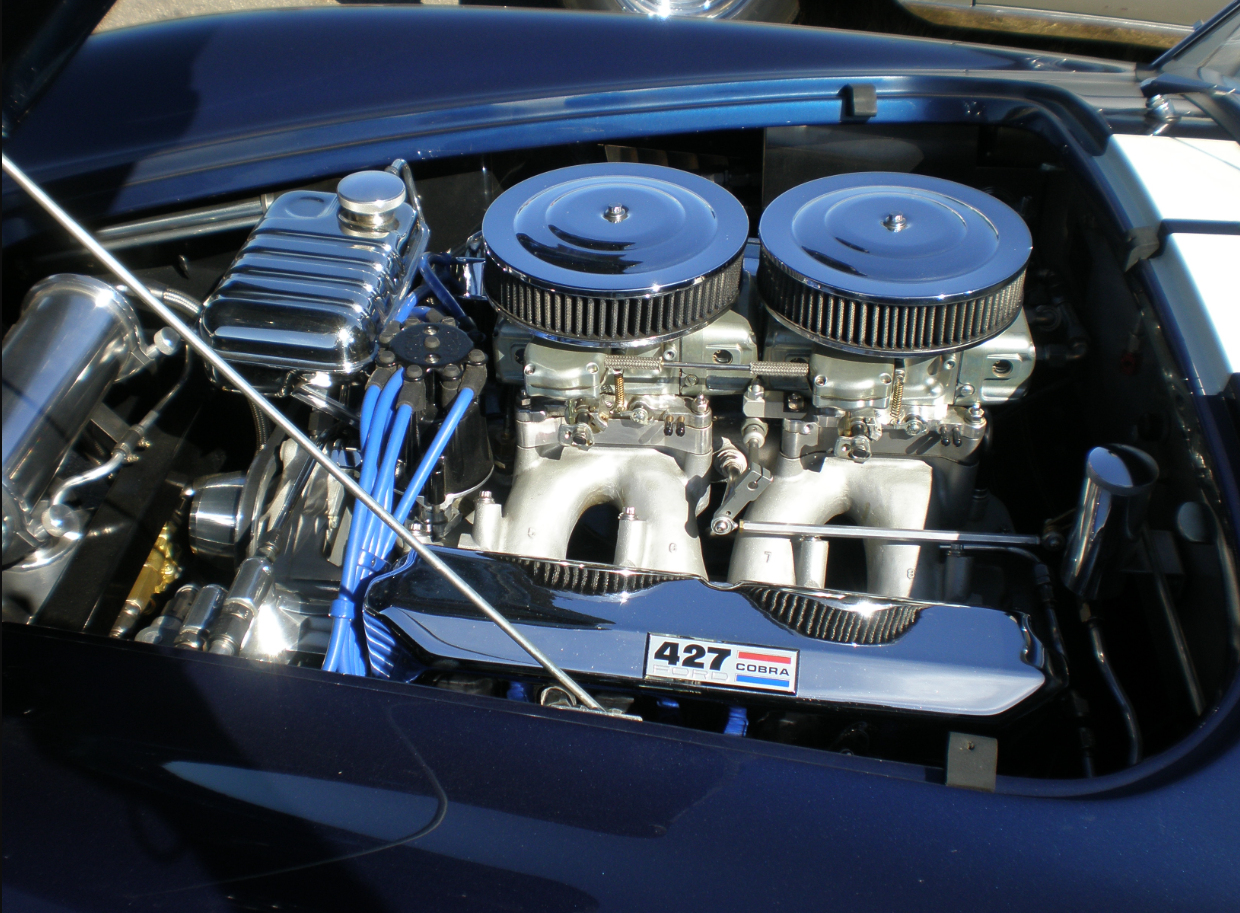
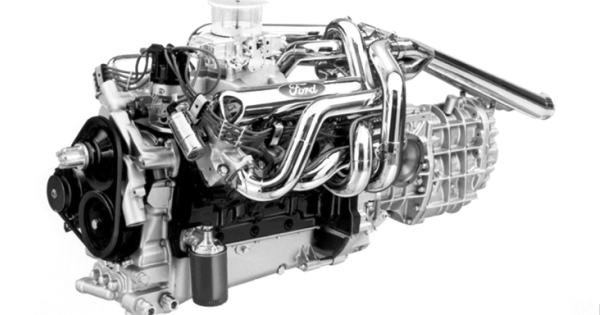
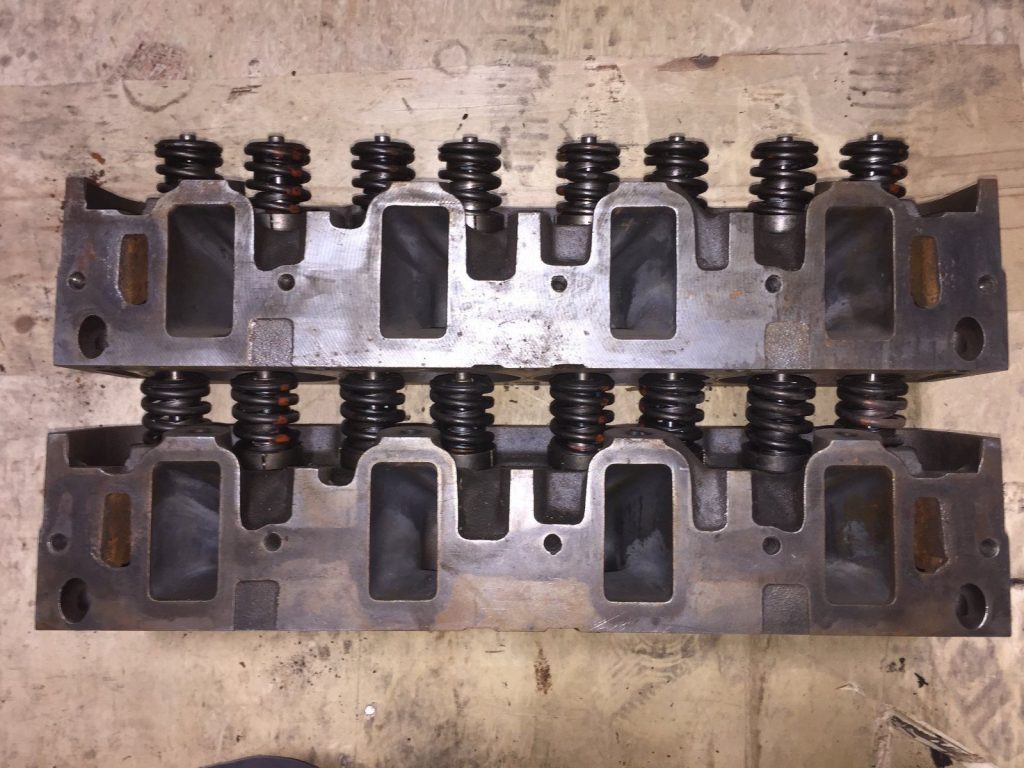
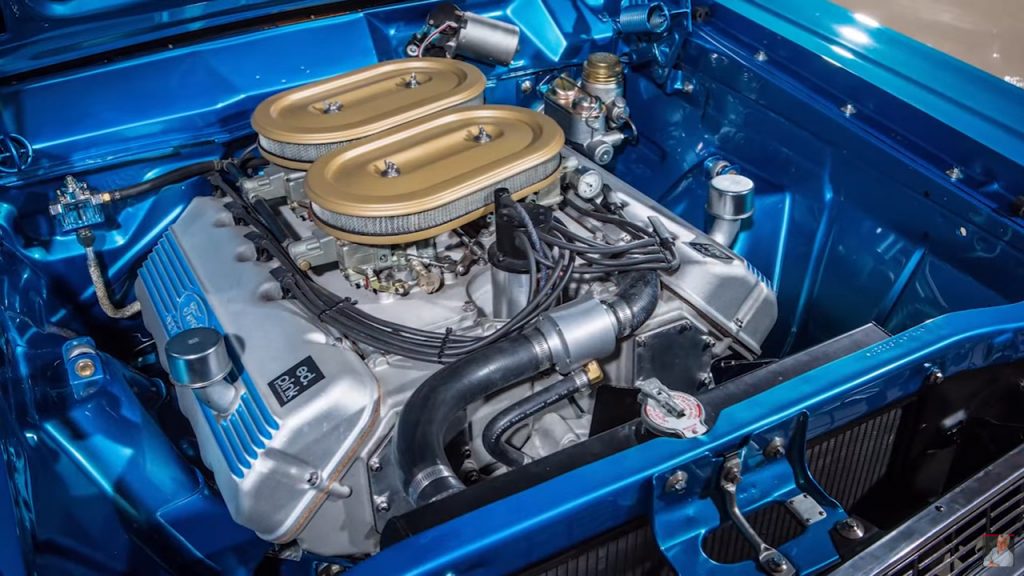
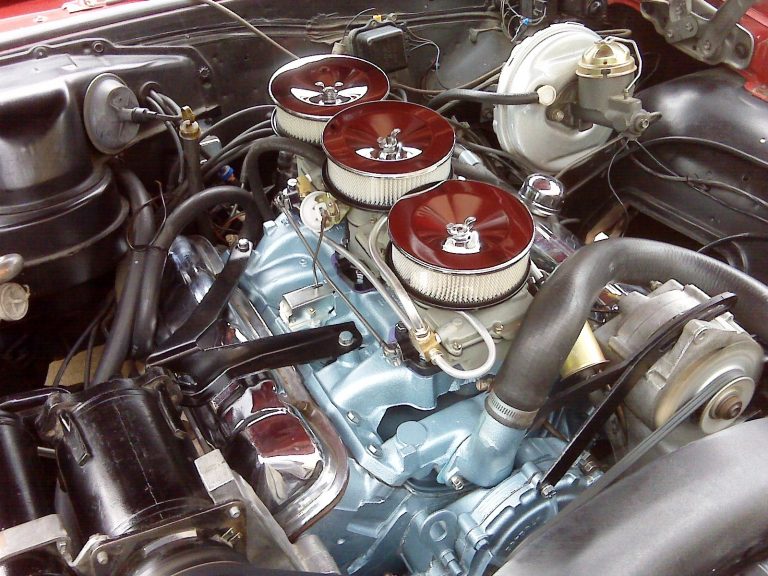
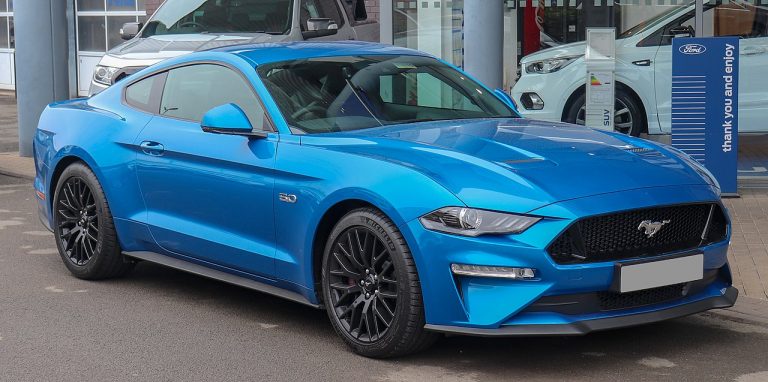
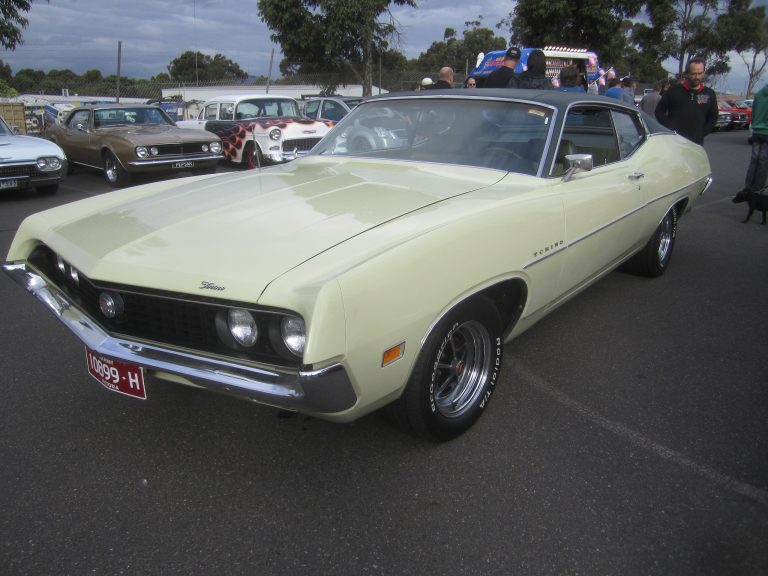
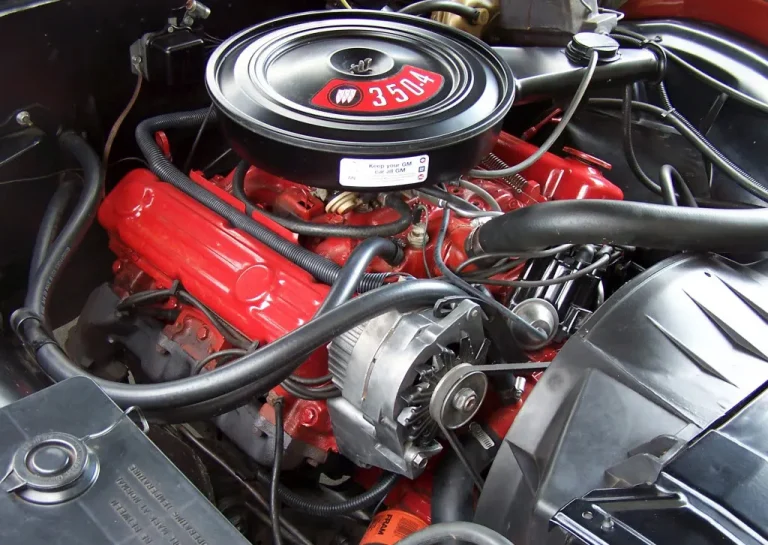
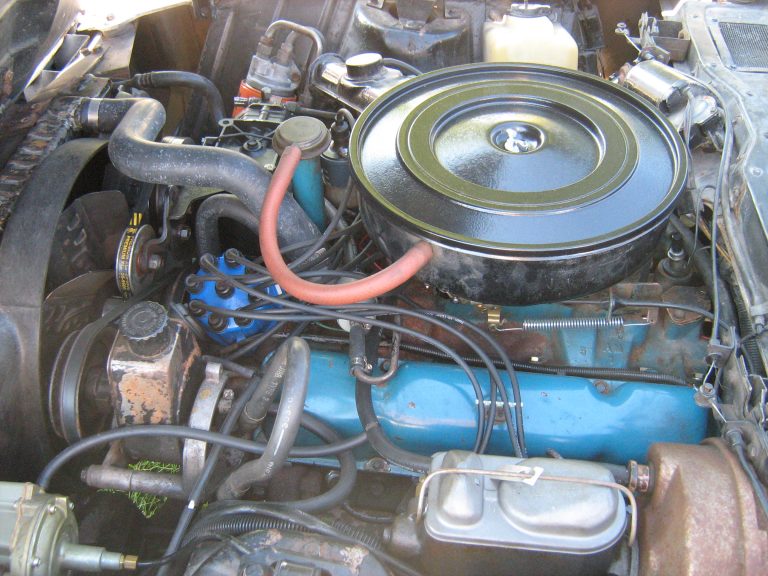
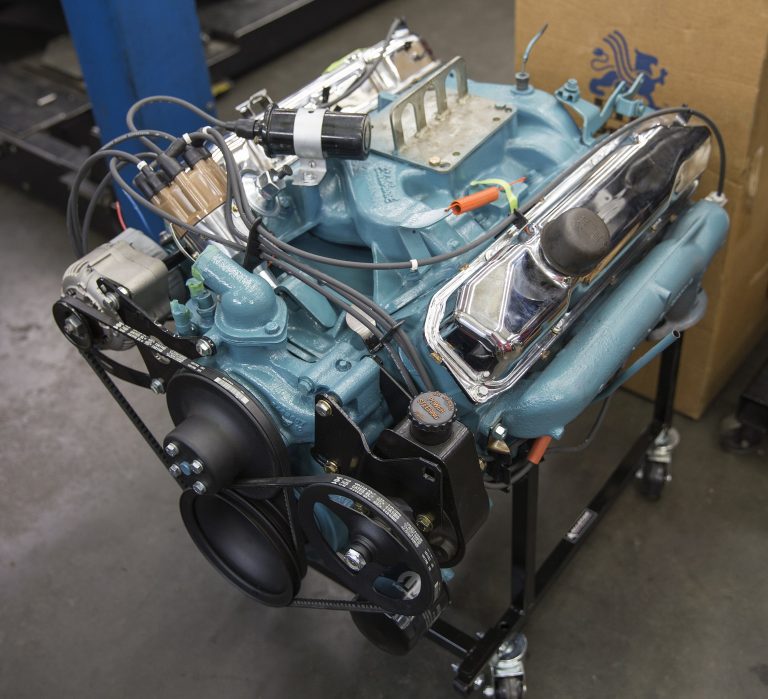
With the understanding that “banned” means somebody got paid off to “ban” Ford engines. Most public was “Buyable” Bill France of NASCAR taking money from Chrysler to “ban” the 427 FE SOHC “cammer” engine.